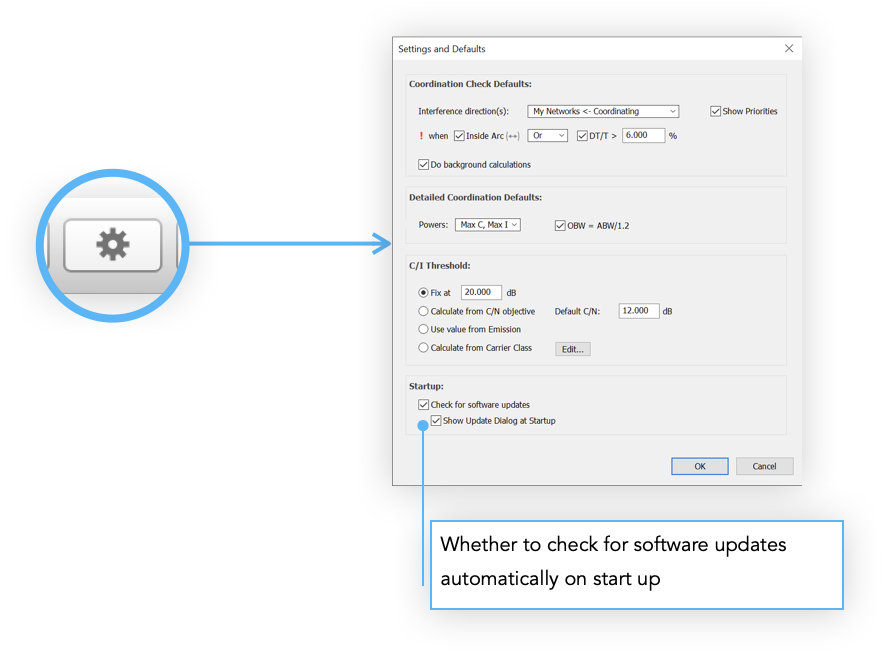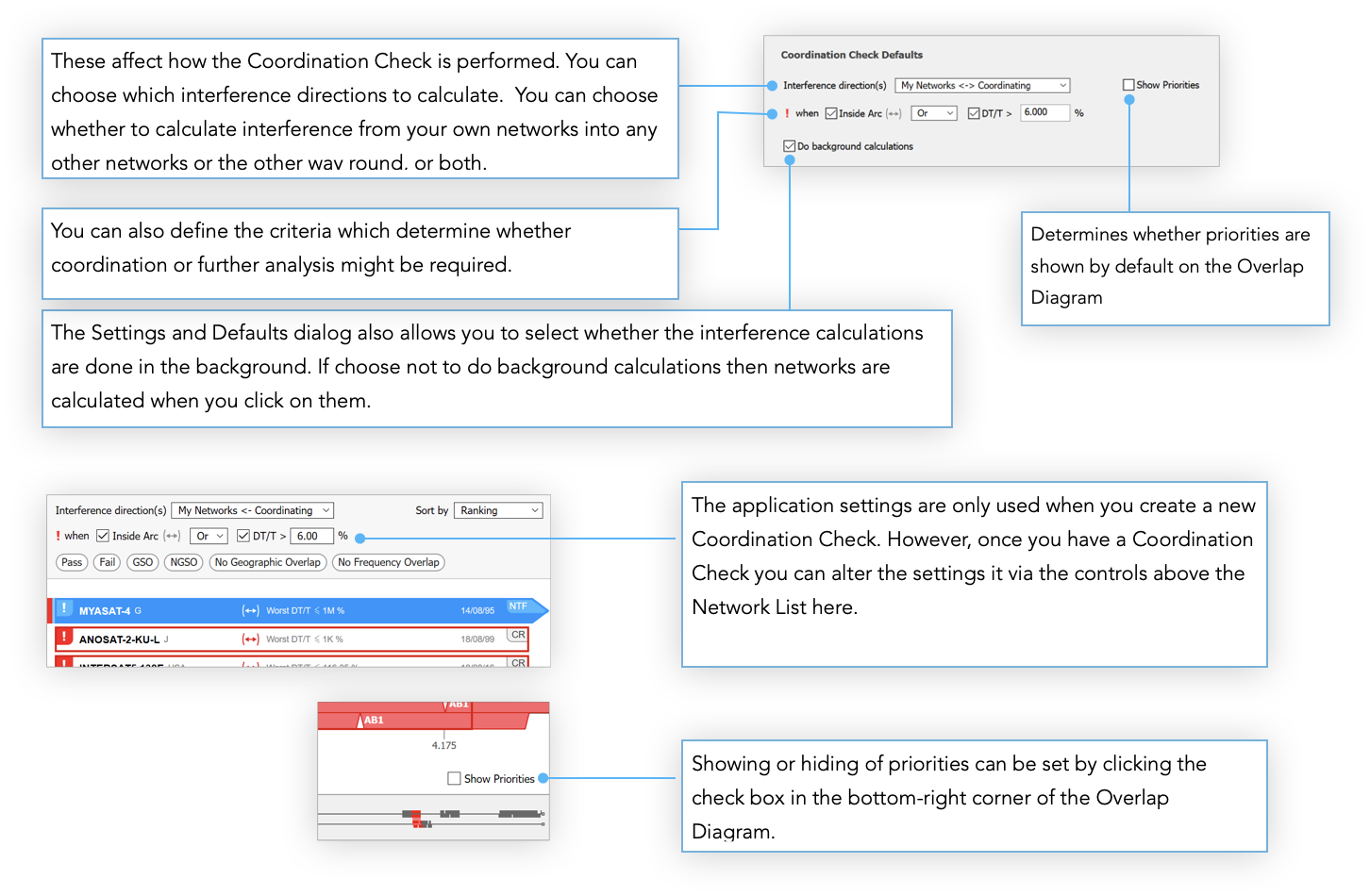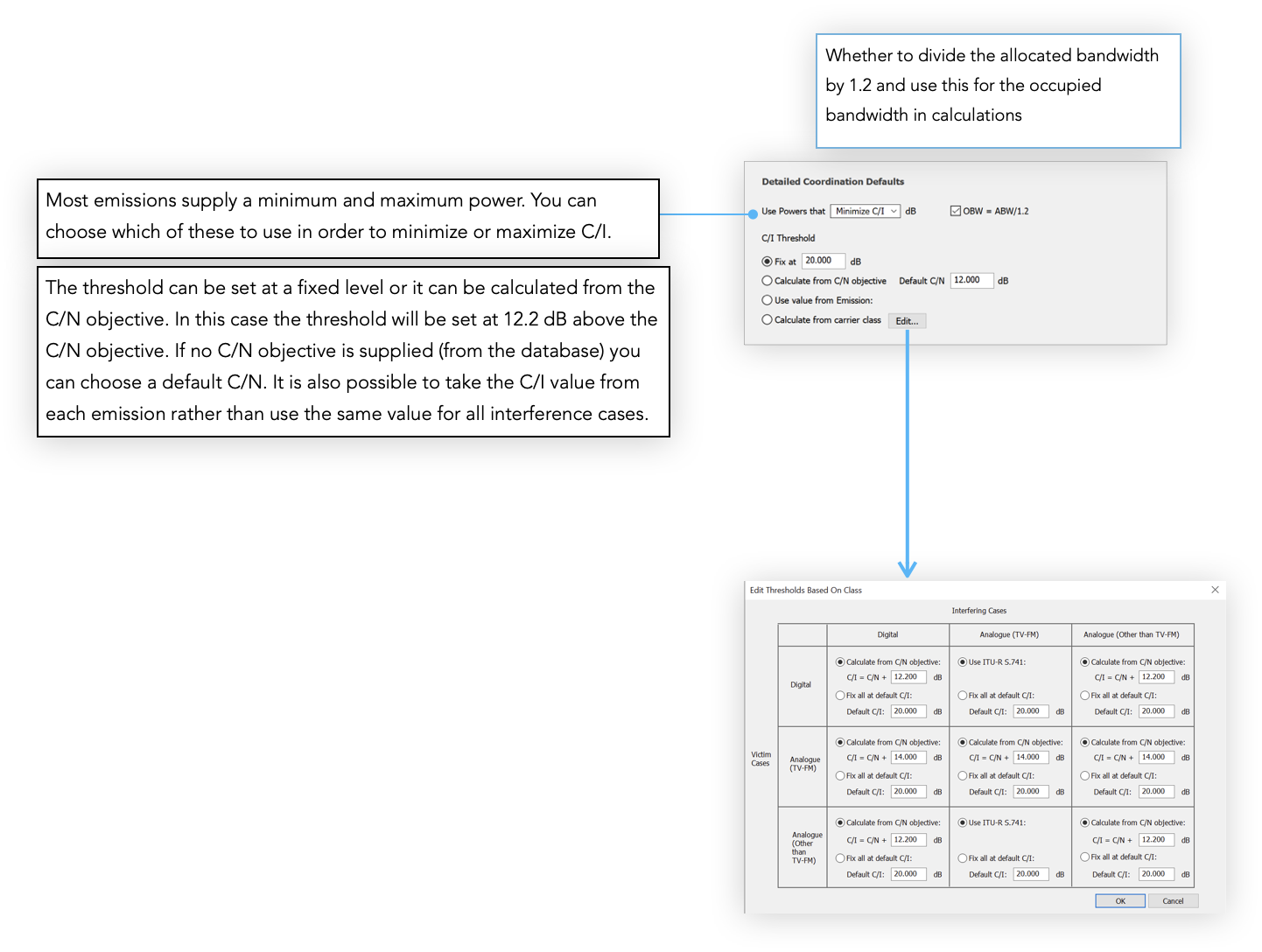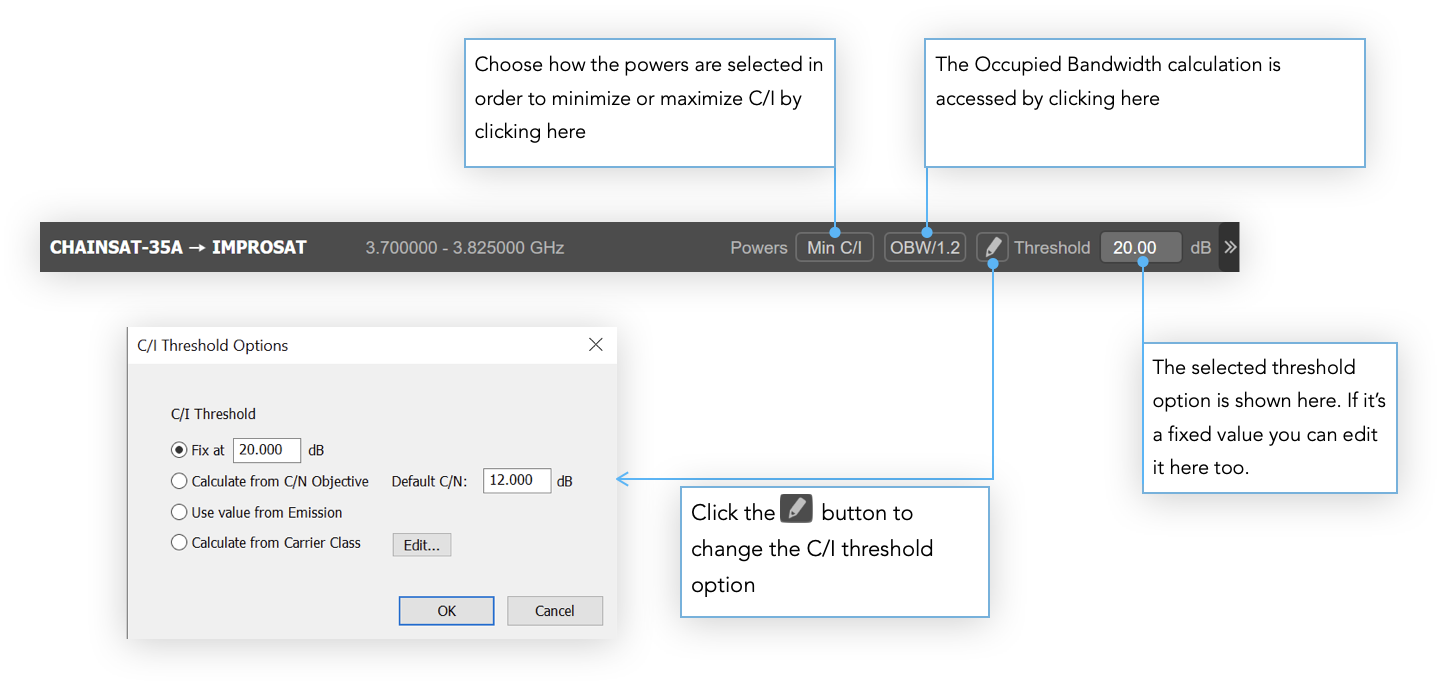Application Settings
The Settings and Defaults dialog was mentioned at the beginning of this document. You’ll recall that this can be invoked by selecting Settings from the Tools menu in Visualyse GSO V3.
The Settings and Defaults dialog can also be accessed by clicking on the Settings button on the toolbar.

Aside from the option to check for software updates, the Settings are broken down into two different sections - those that affect the Coordination Check and those that affect Detailed Coordination.
Coordination Check

Detailed Coordination
These settings are only used in the Detailed Coordination (DC) tool. They govern how the Interference and C/I required level (threshold) are calculated.

The final option is to calculate the C/I threshold based on the carrier class (extracted from the emission code). Click the “Edit” button and you’ll be able to select the option used for each carrier class pair.
When the Interferer is Analogue (TV-FM) and the victim is Digital or Analogue (Other) the equations used by ITU-R S. 741 option are as follows:
Interferer Analogue (TV-FM), Victim Digital
DeNeBd
DeNeBd
Interferer Analogue (TV-FM), Victim Analogue (Other)
in
DeNeBd = Necessary bandwidth of the desired carrier in
Equivalent bandwidth of the interfering carrier (equal to Total Power to Power Density ratio)
When you launch the Detailed Coordination tool you can access all of these settings from the toolbar at the top of the Interference Cases pane.
